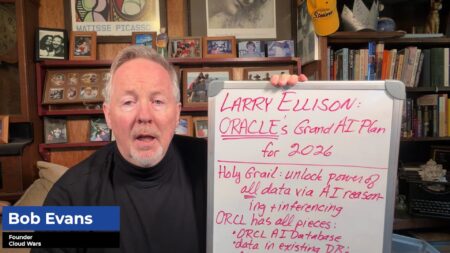We are awash in data today. From revenue, profit, and market share data, to NPS, customer retention, and competitive analysis scores, business leaders have an overwhelming amount of data available to them. So, why aren’t we getting better at decision-making and forecasting? It’s clear that the issue is not a lack of data. It’s about how we use data to make decisions.
What Caused Netflix’s Decline?
The stunning decline of Netflix stock—as of this writing, the company has lost nearly two-thirds of its market cap high of $300 billion—provides a powerful case study. A disruptive player in filmed entertainment, Netflix brought a data-driven approach to an industry that has historically relied on gut feel, taste, and experience.
The company has also played a category-leading role in the adoption of streaming, disrupting terrestrial and cable television as well as movie theatre attendance and experience. Certainly, Netflix doesn’t lack data. And, from outward appearances, it has a strong data-driven culture.
Netflix was a founding member of the FAANG group of stocks (Facebook, Apple, Amazon, Netflix, and Google). It has been a public market darling for the last decade. Netflix executives are well aware of the Wall Street rule: “Bring me good news, bring me bad news, but NEVER bring me a surprise”.
So, how did a company rich in data deliver a surprise this large? While the story isn’t completely clear, one thing we know from previous examples is that a lack of probabilistic thinking may be part of the issue.
Metrics That Matter
In a previous Acceleration Economy post, I introduced the concept of Metrics That Matter, a framework for helping define the metrics that matter most for your business and some predictions for which digital metrics will matter most in 2025. In this post, we’re talking about a framework for operationalizing the metrics you measure. More specifically, how do you know when and how to act on the metrics you’re tracking?
Nearly every industry you can name is going through a steep learning curve in how to capture, process, store, and more importantly, act on data. The introduction of always-on data has only made this process more complicated as business leaders are now faced with data coming at them in real-time.
Over the last decade, we’ve gone from scarcity to an avalanche of an abundance of data in most industries. As many executives are learning, more isn’t always better.
What Can Poker Players Teach us About Probabilistic Thinking?
In her groundbreaking book, “The Biggest Bluff”, about her experience of becoming a professional Poker player, Maria Konnikova ended up writing a fantastic primer on business decision making.
World-Class Poker players know that the game is really about probabilities. You take more or less risk based on the probabilities suggested by the data in the cards you have and the cards that the data suggests your opponents have. To be clear, I’m not suggesting that business is like a Poker game, although one could make that argument. The point here is that Poker is a great illustration of the framework of applying probabilistic thinking to an outcome.
Applying Probabilistic Thinking To Your Business
A powerful diagnostic that I often use in working with boards and senior executives is to ask what level of certainty they use in making critical decisions. 100%? 75%? In most cases, even in larger, mature companies, the answer is “I don’t know. We don’t really have a defined set of parameters”.
The reality is that every decision, even a simple one, has a set of probabilities behind it. In today’s data-rich environment, you can use foundational metrics to determine the appropriate probability of almost every decision. This is not to suggest that using this system will make every decision the correct one. It is only to suggest that introducing probabilistic thinking into your data decision-making will increase the odds that you will make the right decision.
The Role of Culture in Decision-Making
Probabilistic thinking can be a very powerful system to enhance decision-making. At the same time, when introduced, it can challenge the way decisions have been made. Be prepared to have more discussion and debate around decision-making. You will also find that some executives will struggle with the process, as they have been used to making decisions based on gut instinct or their own experiences.
Worse yet, in many cases, they simply can’t make decisions with less than 100% certainty. Given the accelerating pace of change in business today, waiting for 100% certainty means an opportunity is lost.
So, let’s get back to Netflix. With all of the data at their fingertips, is it as simple as a lack of probabilistic thinking? Certainly, there is a lot more to the story than that. I believe, however, that given all of their success, the act of running probabilistic analysis on a potential drop in subscribers, something that had rarely ever happened, contributed to the problem. I predict that Netflix will overcome this challenge but will do so at a significant cost that will go well beyond the price of their stock.
Want to gain more insights from Cloud Wars Expo?
Starting on July 20th, more than 40 hours of on-demand cloud education content will be available for free to Acceleration Economy Subscribers.











